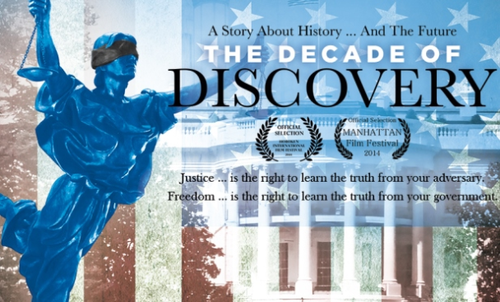Houston, Hello! The Decade of Discovery Showing for One Night Only! – eDiscovery Trends

A few months ago, we told you about an intriguing documentary about eDiscovery that premiered in the New York area. Then, in October, we told you that documentary is making the rounds and may be coming to a theatre near you. Tonight, that documentary is showing in my hometown of Houston, so if you’re in the area, come check it out! It’s free, if you register!
The Decade of Discovery was written and directed by Joe Looby, who, according to his LinkedIn profile, served in the U.S. Navy’s Judge Advocate General Corps, practiced as an environmental enforcement attorney for New York state and was a founder of the forensic technology practices at Deloitte and FTI. His film production company is called 10th Mountain Films, named in honor of his father, who served in the 10th Mountain Division, a U.S. Army ski patrol that fought in World War II.
Described as a “documentary about a government attorney on a quest to find a better way to search White House e-mail, and a teacher who takes a stand for civil justice on the electronic frontier”, Looby notes in a radio interview with the Mid Hudson News that the documentary includes comments by “a government attorney, a teacher, seven judges and two professors”, which includes several well-known names in eDiscovery: U.S. District Judge Shira Scheindlin, of the Southern District of New York, Jason R. Baron, former director of litigation for the U.S. National Archives and Records Administration and now Of Counsel at Drinker Biddle & Reath, and the late Richard Braman, founder of The Sedona Conference, among others. Looby refers to those who have advanced tremendous progress made over the past decade in eDiscovery practice as “true American heroes”.
The movie addresses the considerable advancements to address problems like this in both the government and litigation arenas.
Tonight’s showing will take place at the Majestic Metro Theater at 911 Preston Street in downtown Houston. It begins at 6:30pm with a networking reception, followed by the film starting about 7:30 and a panel discussion afterward including Jason R. Baron and The Honorable Lee H. Rosenthal, District Judge for the United States District Court for the Southern District of Texas.
As of yesterday, seats were still available. So, if you’re in the Houston area and interested in attending (and networking with other eDiscovery professionals), you can register at the Bloomberg BNA site here.
I will be there and if you’re reading this and in the Houston area, I hope to see you there!
So, what do you think? Have you seen The Decade of Discovery yet? Please share any comments you might have or if you’d like to know more about a particular topic.
Disclaimer: The views represented herein are exclusively the views of the author, and do not necessarily represent the views held by CloudNine Discovery. eDiscoveryDaily is made available by CloudNine Discovery solely for educational purposes to provide general information about general eDiscovery principles and not to provide specific legal advice applicable to any particular circumstance. eDiscoveryDaily should not be used as a substitute for competent legal advice from a lawyer you have retained and who has agreed to represent you.







